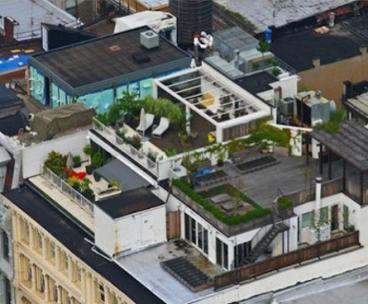
Tim Mack
Submitted by Tim Mack on
The practical realities of building sustainable networks are coming to life in Oakland, California, under the stewardship of a nonprofit group called Bay Localize as part of its Rooftop Resources Project.
As a builder of engagement networks, this nonprofit partners with city governments and local communities to assess resources and meet sustainability challenges. These challenges include mitigating the effects of climate instability and energy costs while equipping local leaders with tools and models that are flexible enough to use in a variety of settings.
Working with PlaceWorks, a Berkeley design and planning consultancy, Bay Localize is utilizing GIS tools to conduct a search for Green Roof candidates that might host hydroponic gardens, photovoltaic panels, and rainwater-collection systems. Some roofs could be viable for more than one of these uses, although slanted roofs have not worked well for garden sites. (Energy generation requires the slant to be in the right direction.)
The project team then collects a deeper layer of data on the ranges of building use and construction, roof access and materials, structural integrity, and surrounding room for ground-level water-collection tanks. This data can be collected and collated using hand-held devices and then used to calculate gallons of water, kilowatts of electricity, and pounds of vegetables potentially produced by any one rooftop.
Concerning food production, hydroponics is showing promise as a strategy to lower roof load; rainwater harvesting usually requires room for at least a 1,000-gallon cistern.
After initial assessments, built using a data-management tool known as ArcGIS, the project estimated potential yields of at least 25% of the total power usage of the neighborhood under study and more than enough food production to meet the needs of the 7,000 people living there.
This PlaceWorks approach has been recognized for its potential by the American Planning Association, American Society of Landscape Architects, and Association of Environmental Professionals.
Timothy Mack is the Managing Principal of AAI Foresight Inc.

